Project Wheeled Armored Vehicle (Improved). Perspective armored personnel carrier for the Self-Defense Forces of Japan
According to various sources, the first attempts to create a new BTR and replace the existing equipment, including the 96 Type machine, were undertaken by the Japanese command in the last decade. It was reported that Komatsu is in talks with the Swiss company MOWAG, the subject of which is the acquisition of a license for the serial production of the Piranha IV armored vehicle. International negotiations yielded no real results, which is why Japan temporarily lost the opportunity to upgrade its fleet of armored vehicles with the help of foreign-made vehicles.
In 2015, the new Wheeled Armored Vehicle (Improved) program was launched - “Wheeled Armored Vehicle (Improved)”. The purpose of this project is to create a new armored personnel carrier, which retains all the positive qualities of the existing technology, but at the same time has certain advantages over it. In particular, the terms of reference for a new project implied the enhancement of ballistic protection and the use of full-fledged mine protection in accordance with current trends in acquiring infantry vehicles. In addition, it was necessary to increase the firepower and flexibility of use through the use of new weapons.
The development of a new project was entrusted to several organizations from the Japanese Ministry of Defense. In addition, it was proposed to involve some commercial companies in the project as subcontractors. The overall supervision of the work is carried out by the Defense Procurement Administration Acquisition, Technology & Logistics Agency (ATLA). The same organization provides information support for the project and is responsible for publishing data in open sources.
Until recently, only the fact of the development of a prospective model of armored vehicles was known, while the technical details of the project were not disclosed. At the beginning of January, 2017, the ATLA agency, published new data on the prospective car and the progress achieved. According to official data, the main part of the design work has now been completed, which allowed us to build a prototype of a new BTR Wheeled Armored Vehicle (Improved). The machine was manufactured by the Komatsu plant and has already managed to come to the test. In the foreseeable future, the prototype will have to pass all necessary checks and ensure the improvement of the project.
The Japanese military department not only reported on the results, but also published some technical details, and also revealed the appearance of a promising sample. In an official press release from ATLA, the main characteristics of the machine were cited. In addition, a few photos and a video were attached to it. It should be noted a remarkable approach to the publication of data. Despite the concealment of some parameters, the press release turned out to be quite informative, which makes it possible to form a definite opinion on the new development.
As follows from the published data, the customer wanted to get a new wheeled armored vehicle, similar to the existing armored personnel carrier "Type 96", but differing in improved characteristics. It was proposed to increase the basic parameters with the help of a revised hull structure, enhanced booking, etc. Also, the designers took into account the current trends in the development of armored vehicles and used high-grade mine protection. The armament complex is also supposed to be formed taking into account modern developments.
Again it was decided to build an armored personnel carrier of "standard" modern architecture. Taking into account foreign and own experience, the appearance of an all-wheel drive four-axle combat vehicle with habitable compartments of increased volume was formed. At the same time, however, the traditional for the modern BTR layout with the front engine compartment has been significantly reworked. At the same time, the control compartment in the front of the hull and the stern landing compartment with the landing through the rear ramp were saved.
One of the tasks of the Wheeled Armored Vehicle (Improved) program is to increase the overall level of crew and landing protection against various threats. In order to solve this problem, the new armored personnel carrier receives a welded armored body, additionally reinforced with patch panels. The composition, thickness and level of protection of the main or additional reservation have not yet been disclosed. Probably, the body itself is able to withstand a small bullet hit. weapons rifle caliber from all angles or large-caliber systems in frontal projection. The use of additional modules suggests a significant increase in performance, up to the possibility of protection against small-caliber artillery shells.
A typical problem of the armed conflicts of recent years has been the widespread use of explosive devices of various types laid on the routes of vehicles. This threat was also taken into account in the new Japanese project. To protect against the explosion of a mine under the wheel or body, the bottom of the V-shape is used, which diverts the shock wave to the sides. It should be noted that other traditional modern means of protection of the crew and landing force are not used.
Protection of the machine and people is also provided by some other means. The project provides for the use of collective protection against weapons of mass destruction. For timely notification of an impending attack, an armored personnel carrier carries a set of laser radiation sensors. There is an automatic fire extinguishing system.
BTR Wheeled Armored Vehicle (Improved) received a body of relatively simple form, formed by several large armor plates. Frontal projection is protected by four parts of different shapes, located under a different inclination. Because of the reduced width of the front sheets, the zygomatic parts set at an angle to the machine axis are used. The upper front sheet, characterized by a large length, also serves as the front section of the roof. For some reason, it is installed with a slight slope. The hull has vertical sides, a slightly inclined stern leaf and a horizontal roof with curved side portions. Above the wheels are provided developed side niches.
The engine compartment of the armored personnel carrier is located in the central part of the body and shifted to the starboard. It contains a Komatsu diesel engine with horsepower 500. With the engine associated transmission of an unnamed type. Its task is to distribute torque to all wheels, which are leading. Chassis new armored vehicles based on existing foreign and domestic developments. It consists of eight wheels with individual suspension on the levers with spring damping. The project does not provide for the possibility of crossing water obstacles by swimming, which is why there are no special propulsion devices for this.
The crew of the BTR Wheeled Armored Vehicle (Improved) consists of three people: the driver, the commander and the gunner. The driver is located in front of the hull at the starboard side. Directly behind it is the engine compartment. The driver has his own hatch in the hull roof, equipped with a set of periscopes. For greater convenience of driving on the march, the hatch can be equipped with a wheelhouse with glazing. Two other crew seats are located to the left of the engine compartment one after the other. The first prototype received a traditional hatch in the front left and a commander's turret in the back. In the future, such equipment may be replaced by other products. To avoid unpleasant incidents, vertical wire cutters can be installed in front of the hatches.
The armored personnel carrier is capable of carrying up to eight soldiers with weapons. All of them are located in the general troop compartment in the aft hull. A characteristic feature of the troop compartment, which distinguishes the new Japanese car from similar foreign models, is the use of the most common shops. Four sets are installed along the sides in the form of a double seat and a backrest of the same width. Special energy absorbing chairs on the prototype are not used. It is argued that fastening the seats to the sides of the hull reduces the negative impact of the blast wave on the troops.
The car received the traditional for modern BTR landing and landing means. A significant part of the hull's stern sheet is occupied by the opening for the lowered ramp. The latter is mounted on the hinge of the lower location and is completed with two hydraulic cylinders. It is noteworthy that the hydraulic ramps, as in the case of the 96 Type BTR, are located outside the hull and can be exposed to serious risks. In case of breakage of hydraulics in the ramp there is a regular door. When landing through the door, soldiers can use the footrest. In the roof of the troop compartment there are six hatches, three above each side. When you open their covers go to the sides of the sides, providing some protection.
The troop compartment of an armored personnel carrier is completely closed. Any optical devices, windows or embrasures for firing personal weapons are not used. The use of small arms is possible only with open hatches in the roof, but this is associated with understandable risks for the fighters.
The prototype presented so far has no weapons. The existing architecture of the machine allows the use of various weapons of existing and prospective types. So, it is quite possible to use a turret borrowed from the existing "Type 96". In this case, the armored vehicle can carry a large-caliber machine gun or an 40-mm automatic grenade launcher. According to ATLA, in the future, the Wheeled Armored Vehicle (Improved) BTR will be able to receive a remotely controlled combat module of one type or another.
The list of compatible modules and their possible armament has not yet been clarified. In addition, the location of the module installation is unknown. Probably, the seat for the combat module will be placed on the roof, next to the crew hatches and the engine compartment. The existence of a significant number of such developments in theory allows the armored vehicle to be equipped with a variety of weapons, from rifle-caliber machine guns to small-caliber cannons and guided missiles. How exactly the customer in the person of the Japanese military department will manage the opportunities associated with the modular architecture of the armament complex will be known later.
Some published photos show that the Wheeled Armored Vehicle (Improved) armored personnel carrier can carry smoke grenade launchers. The existing prototype received two sets of such weapons. On the zygomatic sheets of the corpus were installed two large pillars, on which they placed four forwards directed trunk. Probably, the number and placement of smoke grenade launchers in the future may vary for one reason or another.
The goals set for the project are achieved through various methods and tools. In particular, the cost of obtaining the required characteristics was a significant increase in size in comparison with the serial equipment of the existing types. The length of the experienced Wheeled Armored Vehicle (Improved) BTR is 8,4 m, the width is 2,5 m, and the height on the roof is 2,9 m.
Announced some characteristics of mobility. The maximum speed of an armored personnel carrier on the highway must reach 100 km / h. Power reserve, depending on various factors, - 800-1000 km. Declared the possibility of climbing the slopes of the 30 ° steepness and movement with roll to 9 °. The trench is wider than 2 m and the wall is 60 high, see. The machine cannot float, but is able to cross ford water bodies up to the depth of 1,2 m.
In accordance with the requirements of the customer, the newest Japanese model of armored vehicles should be the basis for machines for various purposes. In the presented configuration, which is the base, the vehicle is an armored personnel carrier and is intended for the transportation of fighters with weapons. Through those or other improvements it is proposed to build new samples. Already announced the development of a command and staff modification, differing in a different feed compartment. To solve new problems inside the building will be placed communications, as well as other target equipment. By processing the troop compartment and installing new external devices it is also proposed to build engineering machines. Later on, on the basis of the Wheeled Armored Vehicle (Improved) platform, other purposes can be created.
To date, the Ministry of Defense of Japan has decided on the goals and objectives of the promising armored vehicles. It is planned to transfer it to the units of the Ground Self-Defense Forces, which will have to participate in the defense against a possible attack. In recent years, the Japanese military department pays special attention to the concept of the so-called. Counter Island Invasion, which involves planning to protect the islands from possible landings of a conditional enemy. A promising model of armored vehicles will be able to find a place in such a system and, to a certain extent, strengthen anti-amphibious defense.
In early 2017, Japan announced the existence of the first prototype vehicle built as part of the Wheeled Armored Vehicle (Improved) project. The financial aspects of the project and current plans for its immediate future were also disclosed. In 2015, 4,7 billion yen (about 41 million US dollars) was allocated for the development of a new project, the construction of a prototype, and some other work as part of a promising program. To date, as follows from the latter News, a significant portion of this amount has been expended.
By the time the first official photographs and characteristics data appeared, the Wheeled Armored Vehicle (Improved) prototype had reached the testing ground. Now carried out checking the car in a reduced configuration. In the future, it will be able to obtain the required weapons complex with these or other systems. According to ATLA, tests of prototypes will be conducted before the 2019 year. After that, the further fate of the project will be decided.
From the official data on the project, it follows that the mass production and supply of new equipment to the Self-Defense Forces will begin no earlier than the very end of the current decade. Thus, the period of active mass production of equipment will be in the next decade. During the twenties, the new technology will have to replace the machines of old models that no longer fully meet modern requirements. Recall, at present, Japan’s Ground Self-Defense Forces have two models of armored personnel carriers. These are tracked "Type 73" and wheel "Type 96" in quantities of more than 330 and 360 units, respectively. It is easy to see that in order to completely replace the existing equipment, it will take long-term mass production at a very high rate.
To date, the Ministry of Defense and Industry of Japan have managed to develop, build and show to the public only an experienced technique of a new type, created as part of the Wheeled Armored Vehicle (Improved) program. The verification process will last about two years, and only after that the car will get real chances to enter the troops. Obviously, in the course of further testing, military and design engineers will be able to identify certain design deficiencies that will be corrected in the future. Thus, by the end of the tests and refinement, some of the features of technology can seriously change. The overall architecture and appearance is likely to remain the same. What kind of structural elements will undergo modifications, and in what configuration the equipment will go into a series - will be known later.
More recently, Japan began work on the next own project, which aims to update the fleet of armored vehicles for the transport of infantry. Again, it was decided to use already existing ideas that had been formed and tested in practice by other countries. The result of this was the appearance of a rather interesting sample of armored vehicles, quite capable of showing good characteristics. Nevertheless, the project Wheeled Armored Vehicle (Improved) has so far managed to reach only the testing stage of the experienced equipment. His real future will be able to be established only in the course of inspections, which will continue until the end of this decade.
On the materials of the sites:
http://armyrecognition.com/
http://defensenews.com/
http://military-today.com/
http://nevskii-bastion.ru/
http://bmpd.livejournal.com/
- Ryabov Kirill
- Japanese Ministry of Defense
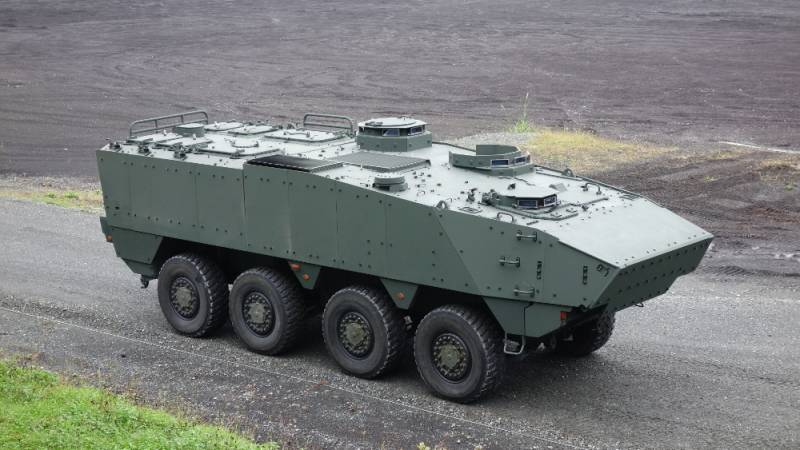
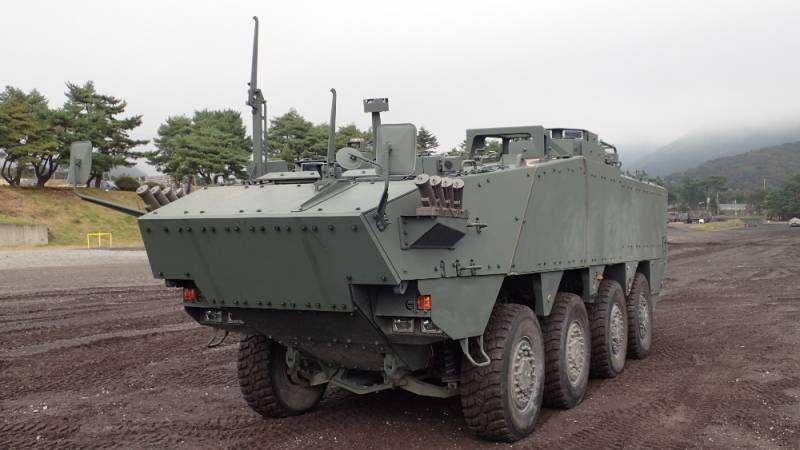
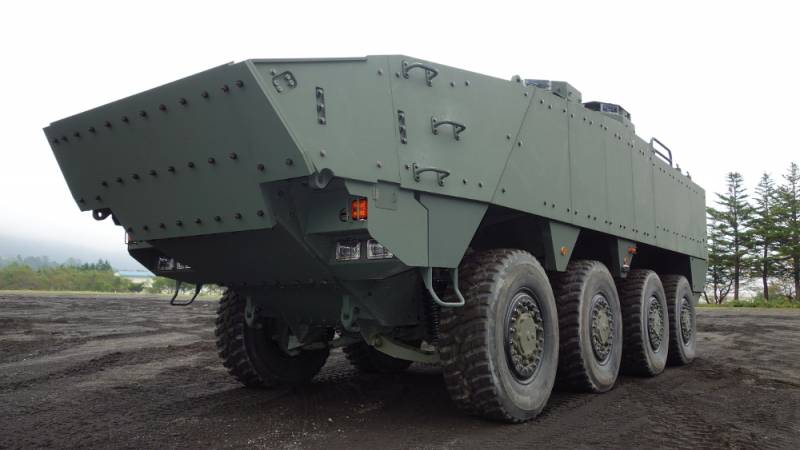
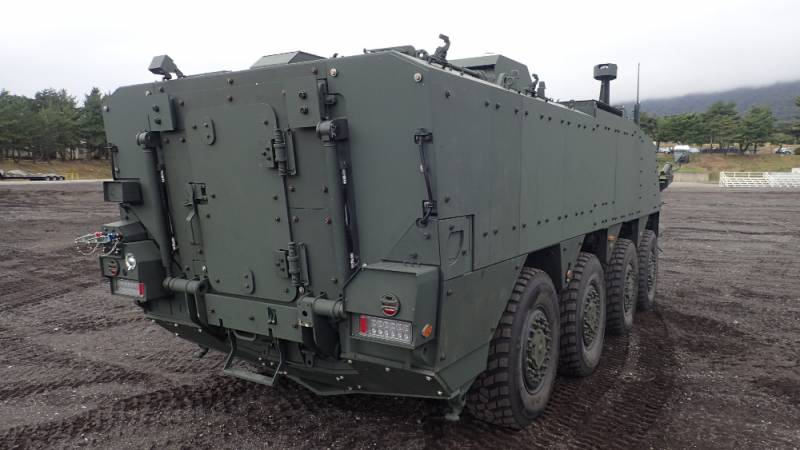
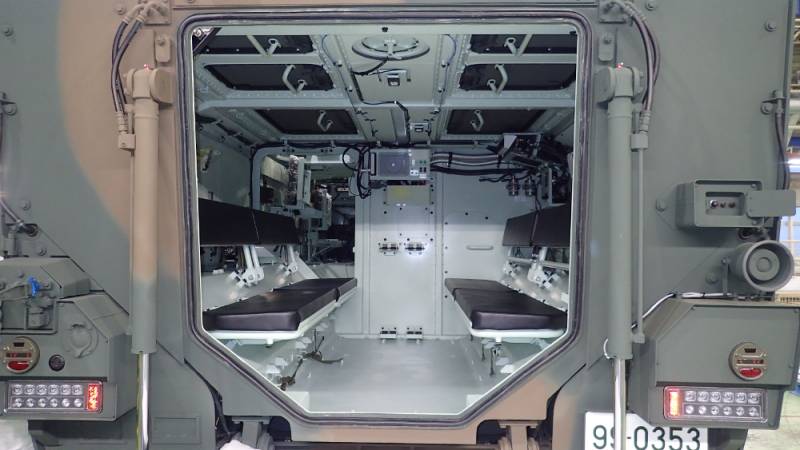
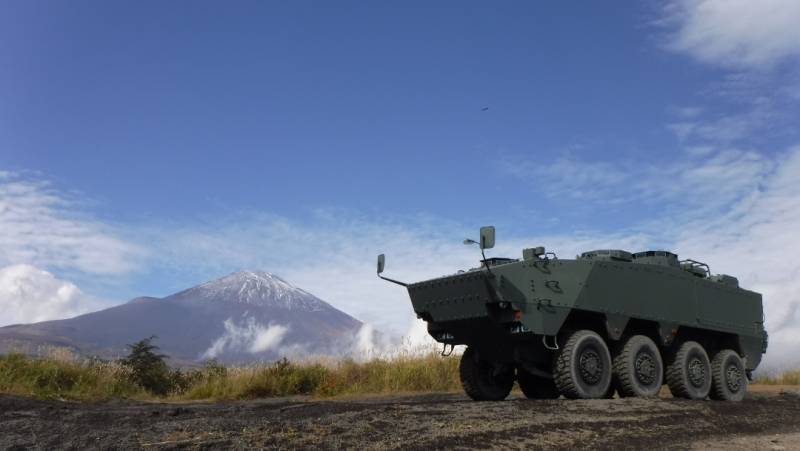
Information